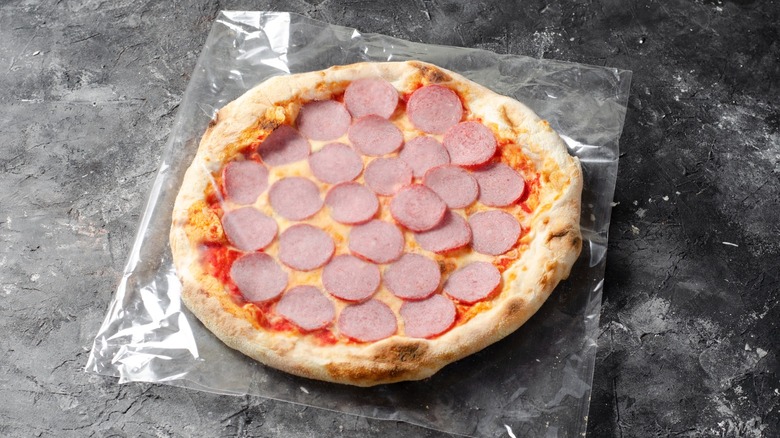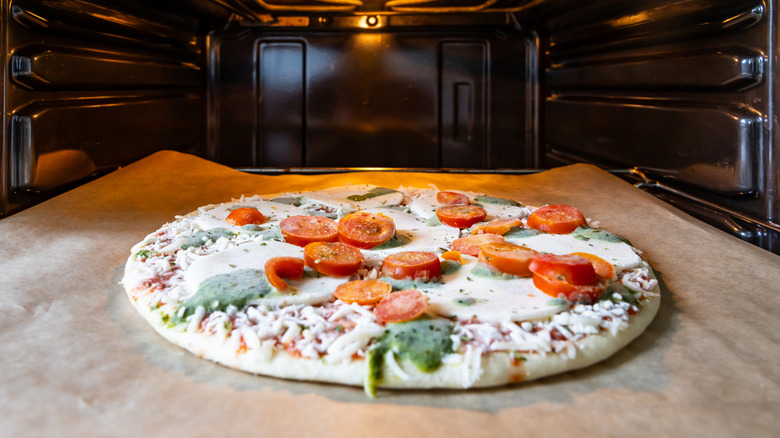How Frozen Pizza Can Indicate A Coming Recession
Many folks are worried about the future of the American economy these days, and with that anxiety comes altered dining trends. Recent inflation, coupled with demands for increased wages, has caused many restaurants to raise prices and led to a trend of consumers looking for more affordable meal options. Frozen pizza strikes many as an economical choice, so when folks turn away from pizzerias toward their grocery store's freezer aisle, it can indicate that a recession is on the horizon.
In 2009, when the Great Recession was in full swing, people were buying more frozen food in lieu of going out – 3.1% more. It may not sound like a lot, but considering this is an industry valued at well over $100 billion, 3.1% in either direction can represent a hefty chunk of change. And in 2020, when many were out of work and staying home amidst the COVID-19 pandemic, the frozen pizza industry saw its sales grow by almost $1 billion. During hard times people arguably seek foods that put them at ease, and certainly pizza is one of the ultimate comfort foods.
So, if anyone monitoring these numbers sees frozen pizza sales rise yet again, it's easy for them to conclude that yet another major economic hit is on the horizon. However, even economically stressed folks aren't necessarily purchasing budget pies like the worst frozen pizza from the grocery store. While many want to save on dining out, they also largely want to treat themselves to something nice.
People want good frozen pizza during tough times
It might not immediately make much sense from a practical standpoint, but it is often the case that when people are trying to save cash by avoiding pizza shops, they opt for premium pies in the frozen aisle. Although shoppers could save more dough by purchasing the cheapest option available, they aren't always. It could be that people are figuring they have already saved by not eating out, which makes splurging on the best frozen pizza in the grocery store a more viable choice in their estimation.
There is some logic to this. It currently costs less than $10 for a large pepperoni from a relatively high-end frozen pizza brand like DiGiorno, whereas a similar item from Pizza Hut or Domino's can run you nearly $20. In the end, buying a quality pie from your grocer's freezer section will nearly always cost far less than buying from a corporate restaurant chain, especially when you tack on the extra cost of a tip for delivery. Until folks begin to view the economy as stable, premium frozen pizza paired with a quality wine might be a lasting staple in many households across the country.

